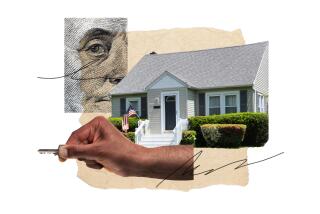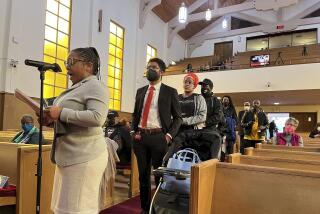America’s ‘casualty gap’
- Share via
Since Sept. 11, 2001, more than 5,000 Americans have lost their lives in the wars in Afghanistan and Iraq — almost 600 of them Californians. This sacrifice, and the sacrifice of all of our brave men and women in uniform, will be honored over the Memorial Day weekend. In honoring their service, we should not overlook a very real though hidden aspect of war: the socioeconomic inequality in who makes the ultimate sacrifice in defense of the nation.
Over the last six years, we have studied this inequality by collecting and analyzing data on the hometowns of more than 400,000 members of the armed forces who died in World War II, Korea, Vietnam and Iraq. By integrating these records with census data, we demonstrate unambiguously that, beginning with the Korean War, disadvantaged communities have suffered a disproportionate share of the nation’s wartime casualties, while richer communities have been more insulated from the costs of war. Furthermore, the data suggest that this “casualty gap” between rich and poor communities has reached its widest proportions in the ongoing conflict in Iraq. Although the military uses the term “casualty” in reference to both killed and wounded soldiers, following the standard practice in political science our study uses the term casualty to denote deaths.
Nationally, in the Korean, Vietnam and Iraq wars, communities in the lowest three income deciles suffered 35%, 36% and 38% of the casualties, respectively. Yet communities in the top three income deciles sustained significantly fewer casualties — 25%, 26% and 23% of the casualties, respectively.
More advanced statistical analyses, which account for a variety of other important factors, also offer strong evidence of casualty gaps between communities with different levels of income and education. In Los Angeles, for example, citywide almost 27% of residents hold a college degree. By contrast, in the specific L.A. neighborhoods that have lost a young man or woman in Iraq, less than 12% of residents graduated from college. Similarly, in New York City, the citywide average median family income is nearly $42,000, while the average in neighborhoods that have experienced an Iraq war casualty is $34,000, 19% lower.
Assertions of a casualty gap are not new. In the Civil War, there were cries of a “rich man’s war, poor man’s fight.” But documenting this inequality has proved difficult. Previous studies were limited in scope and produced conflicting findings. This confusion led commentators such as William F. Buckley to describe Vietnam as an “all-American effort” of shared battlefield sacrifice. Our study, however, definitively shows that the burden of war death in Vietnam, Korea and Iraq has not been shouldered equally.
It is possible that the casualty gap is an inescapable consequence of broader social inequity and the military’s important role as an engine of opportunity and upward mobility. But the gap also plainly conflicts with a norm of shared military sacrifice that is as old as the republic. George Washington proclaimed that every citizen who enjoys the rights and privileges of citizenship “owes not only a proportion of his property but even of his personal service to the defense of it.”
What would happen if the nation openly acknowledged the casualty gap? Would citizens rethink questions of war and peace? To find out, we conducted a series of original public opinion survey experiments with nationally representative samples of Americans. We found that citizens informed about the existence of a casualty gap were significantly more likely to oppose ongoing military operations and less willing to support future ones than were their peers who were not informed about casualty inequalities. For example, in evaluating a hypothetical military mission to halt Iran’s nuclear weapons program, respondents told about casualty inequalities in the Iraq war said they would tolerate 40% fewer casualties to achieve the mission’s goals than would their peers who were not given this information.
These experimental results suggest that if Americans were to learn of wartime inequalities, the public would become more circumspect about future military action. However, the casualty gap is not part of our national dialogue. The reason is clear: Casualty inequalities challenge our fundamental American values. Bringing a frank and honest discussion of the casualty gap into the public sphere could significantly alter the tenor of political discourse in Washington.
We call on policymakers, military leaders and the public to acknowledge and discuss the disproportionate wartime burden borne by America’s poorest and most disadvantaged communities. Let us remember the full human costs of military action, including the socioeconomic inequality they underscore, and weigh them carefully when crafting American military policy.
Douglas L. Kriner is an assistant professor of political science at Boston University. Francis X. Shen is a fellow in the MacArthur Foundation Law & Neuroscience Project and a visiting scholar at Vanderbilt Law School. They are the authors of the recently published book “The Casualty Gap: The Causes and Consequences of American Wartime Inequalities.”


